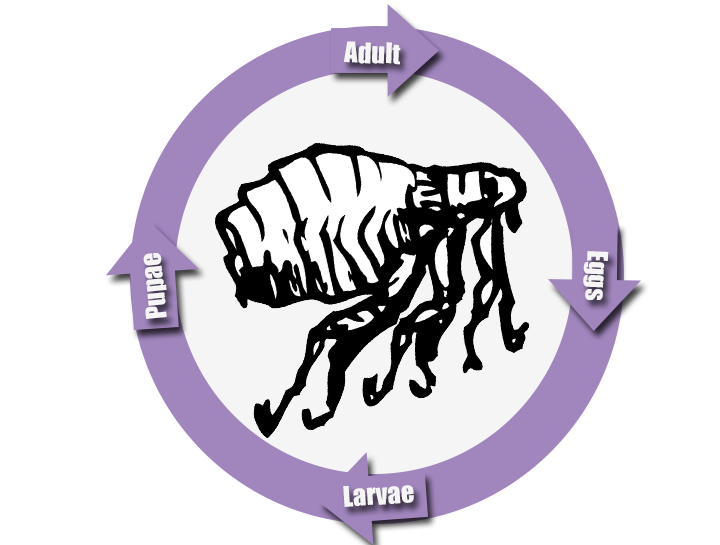Pet Parasites – The Flea and Its Life Cycle

Here is the life cycle of a flea:
Eggs
The Eggs are laid in the hair coat and are designed to fall off your pet. They are resistant to insecticides, but susceptible to various insect growth regulators.
Larvae
The Larvae develop in the pet's environment and like areas with low light and high moisture. Larvae are susceptible to traditional insecticides and insect grown regulators. Larvae eventually spin cocoons and become pupa.
Pupae
The Pupae are resistant to freezing, desiccation (drying), and insecticides while being able to lie dormant for up to 9 months. They are stimulated to hatch as young adults by vibrations (walking on the carpet or vacuuming), warm temperatures, and increased carbon dioxide levels from your pet's breath. Usually, hatching occurs when a dog or cat is near and the new flea is able feeds off the pet (the "host").
Adult Fleas
Adults Fleas only account for 3-5% of the flea population. This is why treating the environment is so important. Once the adult flea feeds on blood, the female can lay 40-50 eggs per day and up to 3,000 in its lifetime. Once hatched, fleas start feeding on blood within 2 days. They start laying eggs a couple of days later.
